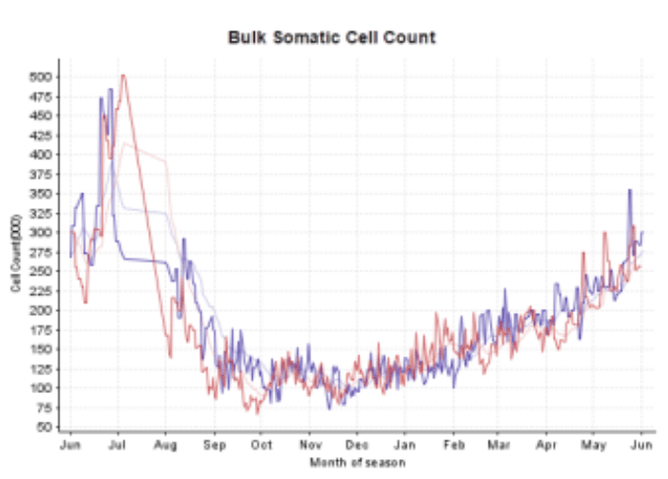Tips for managing a late-season increase in your BMSCC!
Strip the herd to check for clinical cases - regular stripping (e.g. one quarter per milking) can help detect new clinical cases quickly and reduce the spread of infection.
Use herd test information to identify high SCC cows. When considering how to manage these look at:
Age of the cow
Pregnancy status
Udder/teat conformation
How many quarters are affected by Milk production?
How long she has been infected?
Was she high at the last herd test?
Was she high last season?
Has she been treated for clinical mastitis?
How many times?
Did she respond to antibiotic dry cow therapy in the last dry period?
Milk culture results - identify the bacteria causing the infection - this helps us identify if it is a contagious or environmental bug and helps to predict treatment outcomes.
Cows that are more recently infected are likely to respond better to treatment than cows that are chronically infected. For subclinical infections, it is questionable whether treatment with lactational therapy is cost-effective. It may be better to dry the cow off early using an antibiotic dry cow therapy or to cull. Drying off low producers early can help manage SCC too.
Ensure your teat spray is mixed to the correct concentration and apply it after every milking.
Dealing with the high SCC cows is a short term fix. Preventing new infections should be the long term focus. Consider having a full mastitis assessment - including machine check and/or milking time visit. Assessment of milking routine, cow teat health and machine function is invaluable for identifying risk factors for the spread of infection.


